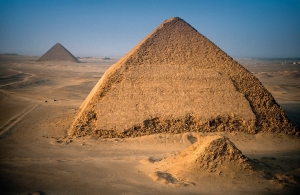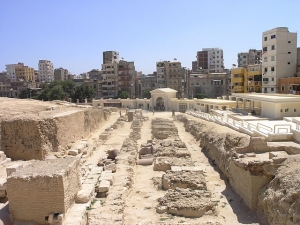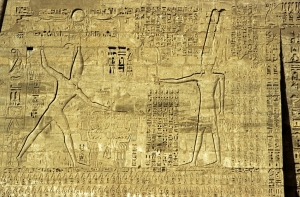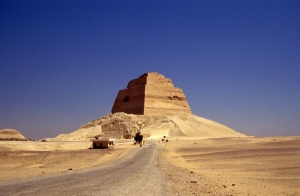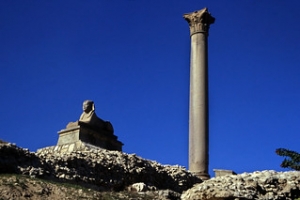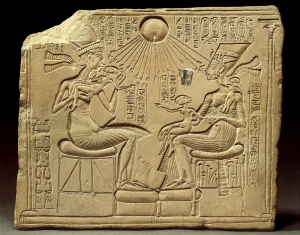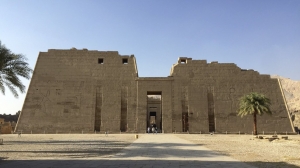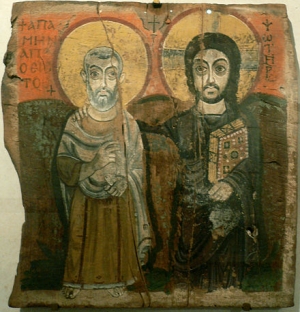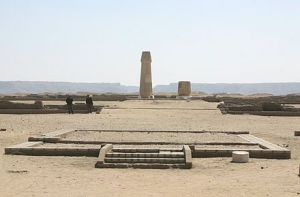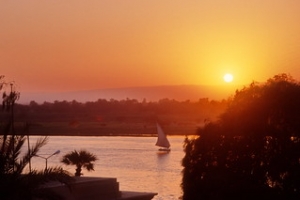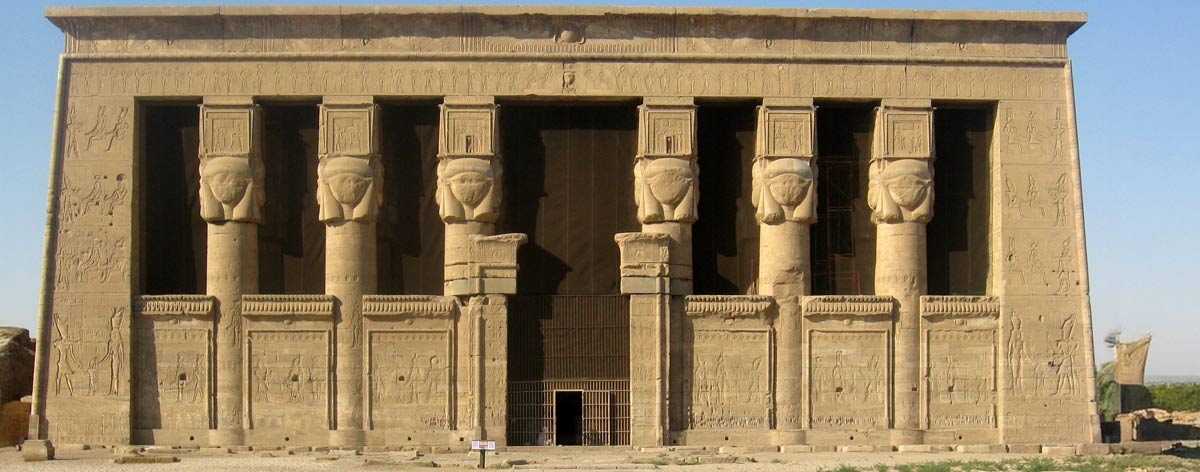
Ancient Egypt’s Hidden Treasures
Through the Delta and Middle Egypt
25th October - 5th November 2026
(12 Days)
Expert Historian : Professor Joann Fletcher
Tour price: £5,995
Ancient Egypt’s Hidden Treasures
Through the Delta and Middle Egypt
Your Holiday Essentials
25th October - 5th November 2026
(12 Days)
Four star or best available hotels, meals as indicated, drinks with dinner, all entrance fees, tour manager and expert historian throughout, optional travel from UK
Expert Historian: Professor Joann Fletcher
Prices:
Standard price: £5,425
Incl. travel from UK: £5,995
Room sole occupancy supplement: £745
Non-refundable deposit: £300
Booking open
Contact us for further information
|
|
Tour Introduction
With Egypt’s most famous ancient monuments visited by millions each year, some of its most spectacular sites still lie beyond the usual itineraries. On our 11-night and 12-day ‘Hidden Treasures’ tour, we not only visit pyramids, tombs and temples across the Delta and Middle Egypt, but royal settlements and palaces to follow in the footsteps of some of ancient history’s greatest names.
In the company of expert Egyptologist, author and tv presenter Professor Joann Fletcher we travel through little-known landscapes to some of Egypt’s key sites and the people who made history there.
Beginning with our visit to the Grand Egyptian Museum to see the treasures of Tutankhamun, we then travel across the Delta to the temple of Bubastis, to the royal tombs at Tanis and to the discovery site of the celebrated Rosetta Stone. Spending time in Alexandria, royal capital of Alexander the Great and his ultimate successor Cleopatra, our journey takes us south to the huge pyramids of Dahshur, Maidum, Lahun and Hawara, to the tombs of Beni Hasan and on to Tell el-Amarna, home of Akhenaten, Nefertiti and Tutankhamun himself. In Abydos we tour the temple of Osiris and the royal ancestors, in Dendera the temple of goddess Hathor, and in our final destination Luxor we explore its West Bank and the spectacular Medinet Habu.
This is an ideal tour for those who already know the more familiar sites of ancient Egypt and want to further their knowledge of this spellbinding civilisation. It is a perfect sequel to our Immortal Egypt: Bringing an ancient civilisation to life tour https://www.theculturalexperience.com/tours/ancient-egypt/?sid=842b1628d52ad201053ead0ccd441c45
Background
Since ancient times Egypt has rightly been called ‘the gift of the Nile’, whose rich alluvial soil made possible the rise of a legendary civilization in an otherwise desert landscape. The great river also dictated the way the Egyptians referred to their country, with northern ‘Lower’ Egypt and southern ‘Upper’ Egypt so named because of the south-north direction in which the Nile flows before spreading out across the Delta into the Mediterranean.
With these two distinct regions of Upper and Lower Egypt first brought together around 3100 BC when southern leader Narmer (aka Menes) eventually defeated his opponents in Lower Egypt, this pivotal moment created the ‘world’s first nation state’. It also initiated a succession of 30 royal dynasties who ruled Egypt and its empire for the next 3000 years, these three millennia divided into the Old, Middle and New Kingdoms punctuated by ‘Intermediate Periods’ of instability.
Although the Old Kingdom (c.2686-2181 BC) is best known for its pyramid tombs located around the north, temples were also created throughout the Nile Valley and Delta into the Middle Kingdom (c.1985-1650 BC), whose cultural glories include the continued creation of pyramids together with rock cut tombs. The Middle Kingdom rulers also expanded Egypt’s empire abroad, as did their counterparts at the beginning of the subsequent New Kingdom (c.1550-1069 BC). Yet during the political upheaval of the so-called ‘Amarna Period’ when the traditional temples were closed down and the royal capital relocated to Amarna, Egypt’s infrastructure fell apart as its empire began to fragment.
Despite the best efforts of later New Kingdom pharaohs, a combination of regicide, corruption and inflation allowed a succession of Libyans, Nubians and Persians to gain control of Egypt for much of the first millennium BC. Only in 332 BC did the arrival of Greek king Alexander the Great reverse Egypt’s fortunes, for he not only created a new capital Alexandria on the Mediterranean coast but initiated the Ptolemaic dynasty of male and female pharaohs culminating in the great Cleopatra herself. Issuing their edicts in both Greek and Egyptian, the Ptolemies rebuilt temples throughout Egypt, in which they were portrayed as traditional pharaohs, as were the Romans who invaded in 30 BC.
Only when Rome’s empire adopted Christianity at the end of the C.4th AD did all this change, as temples became churches or were closed down along with the temples’ schools in which hieroglyphs were traditionally taught. For 1,400 years Egypt’s ancient past lay silent until the discovery of the Ptolemies’ Rosetta Stone, whose bilingual Greek and Egyptian text allowed hieroglyphs to be deciphered in 1822 when this immortal civilization could finally begin to re-emerge into the modern world.
Highlights
• Visit some of ancient Egypt’s lesser known yet spectacular sites
• In the company of expert Egyptologist, author and tv presenter Professor Joann Fletcher
• Explore the impressive pyramids of Dahshur, Maidum, Lahun and Hawara
• Visit Rosetta and Qaitbay Castle where the groundbreaking Rosetta Stone was discovered
• Tour Alexandria's Qaitbay Citadel, site of the legendary Pharos Lighthouse
• Enjoy some of Egypt’s most rewarding museums including the newly opened Grand Egyptian Museum and Coptic Museum
• Explore Tell El-Amarna, Akhenaten’s new capital city built for the worship of Aten
• Visit Tanis, once a major city and home to Egypt's royal tombs, but lost under the sands until modern times
• Travel through some of Egypt’s most emblematic scenery – from the Delta to the oasis of Fayoum and on down the lush Nile Valley
What's Included
- Three-course dinner parties hosted by your expert historian and tour manager
- Two drinks i,e wine or beer at each dinner
- Tour information booklet
- The company of like-minded travelers
- Return flights from London (optional)
- Modern, comfortable, air-conditioned coach
- Helpful and friendly travel advice
- Expert historians throughout providing a daily variety of talks, presentations and Q&A
- Entrance fees for sites included in itinerary
- Dinner parties hosted by your expert historians and tour manager
- Dedicated Tour Manager
- All taxes and gratuities
- 3 & 4 Star Hotels
"Splendid things gleam in the dust"
Gustav Flaubert (1821-80) describing Egypt in Flaubert in Egypt
Itinerary
Day 1. Arrival: fly London to Cairo and transfer to our hotel for two nights (or join tour at Cairo hotel). (D).
Day 2. Cairo - a wealth of museums: a full day in Cairo exploring some of the city’s best museums. We travel to Coptic Cairo, a stronghold for Christianity both before and into the Muslim era, where we enjoy perusing the Coptic Museum, the largest collection of Coptic artefacts and art in the world. We return to the Old Cairo Museum where we focus on the sparkling Tanis collection, including masks of gold and coffins of silver, an excellent preparation for our site visit on day 3. The afternoon is spent in the newly opened Grand Egyptian Museum where we view the breathtaking Tutankhamun treasures in their exciting new setting. (B, L, D).
Day 3. Into the Delta: leaving Cairo we drive into the Nile Delta stopping briefly at Bubastis (Tel Basta) centre of the worship of the feline goddess Bastet. We proceed to Tanis (San-al-Hagar) whose important ruins include fallen obelisks from the Temple of Amun-Ra and intact Pharaonic tombs, unsullied by the depredations of grave robbers. We journey on to the Mediterranean coast at Ras El Bar and our comfortable hotel for the night. (B, L, D).
Day 4. Rosetta and Alexandria: we drive west across the fertile Delta and stop at Fort Julian near Rosetta where in 1799 the occupying French discovered a large, inscribed stone. The Rosetta Stone was to lead to the decipherment of Egyptian hieroglyphics. After exploring the Rosetta Museum we continue to Alexandria to visit the Citadel of Qaitbay, site of the legendary Ptolemaic Lighthouse of Alexandria. Hotel in Alexandria – 2 nights. (B, L, D).
Day 5. Alexandria – Greeks and Romans: a full day at Alexandria beginning with the captivating Catacombs of Kom el Shoqafa, started in the second century AD, where we admire the stunning funerary architecture and inscriptions of the tombs of wealthy Hellenized Egyptians and Romans. At the Serapeum we marvel over the site of what had been the largest temple in the Greek quarter of Alexandria built in the Ptolemaic era. The site’s former glory is attested by the imposing Pompey’s Pillar, in fact erected between 298-302 AD in the reign of Diocletian, and one of the few ancient monuments in the city standing in its original location. Our afternoon is spent exploring the Graeco-Roman Museum whose artefacts provide a fascinating insight into the rich cultural interchange between the Graeco-Roman world and ancient Egypt. (B, L, D).
Day 6. Dahshur: we drive to the Dahshur pyramid complex where we admire the work of King Snefru (c.2600 BC) and his Red and Bent Pyramids, among the oldest, largest and best preserved in Egypt. The site provides a unique insight into the learning curve experienced by Snefru's architects who, in the case of the Bent Pyramid, made some erroneous calculations before creating Egypt’s first straight-sided pyramid, the so-called 'Red Pyramid'. Drive to Cairo and our hotel for the night. Free time. (B, L, D).
Day 7. Maidum and Fayum: leaving Cairo we follow the lush Nile Valley south to Maidum to visit its striking-looking pyramid begun by King Huni and completed by his son Snefru. Our journey continues on to further pyramid complexes at Lahun and Hawara, where we view the tombs built for kings Senwosret II and Amenemhat III, rulers of the Middle Kingdom during the C.19th BC. Continue into the Fayum, a large oasis which provided the earliest evidence of farming in Egypt. We check into our hotel on the Qurun Lake. From here we enjoy a visit to the Tunis Pottery Village, home of a respected craft school established in the 1960s by the Swiss Evelyne Porret, which plays an important role in understanding ancient Egyptian pottery techniques. (B, L, D).
Day 8. Into Middle Egypt: our journey continues to Tuna El Gabal (Hermopolis) where we visit the Graeco-Roman necropolis of Khmun and the elaborate Greek-style tomb of Petosiris. New and exciting discoveries are still being made here in what has been called ‘Pompeii in the desert’. From here we cross to the opposite side of the Nile to explore further spectacular tombs at Beni Hassan, this time dating from the Middle Kingdom (c. 2040 to c. 1782 BC). Containing rock-cut burial chambers of nomarchs (provisional governors), later reused as the excavation headquarters of archaeologists, the site is important in the history of early Egyptology. Hotel in Minya for one night. (B, L, D).
Day 9. Tell El-Amarna – city of Akhenaten and Nefertiti: a special day on the tour when we visit the remarkable site of Tell El-Amarna, established by Akhenaten and Nefertiti in 1346 BC as a new capital and centre for the worship of the new religion of the sun god Aten. At this atmospheric site we appreciate the focus on the one god Aten and how and why this disappeared, along with the city, soon after Akhenaten’s death. The discovery of Pharaoh's diplomatic correspondence 'the Amarna letters' also reinforced the importance of the site. Here we visit Aten’s Great Temple, the Royal palace complexes, and the tombs of the high official (and later King) Ay and of Akhenaten himself. We drive towards Abydos (Sohag) and our hotel for the night. (B, L, D).
Day 10. Abydos and Dendera: we continue south to the site of Abydos, considered one of the most important archaeological sites in Egypt, and site of the remarkable Temple of Seti I. Inscribed on its inner walls is a huge King List with the names of pharaohs from the first (Narmer) up until Seti, a list described by some as the ‘Rosetta Stone’ of ancient Egyptian archaeology. We continue to the equally spectacular temple complex of Dendera with its collection of structures dominated by the Hathor Temple built by Ptolemy XII and his legendary daughter Cleopatra VII, whose towering image dominates the wall surrounding the temple's shrines, stairways and hypostyle hall. Continue to Luxor and our hotel for two nights. (B, L, D).
Day 11. Luxor’s West Bank splendours: we cross the Nile at Luxor to explore Medinet Habu, one of Egypt’s finest sites, dominated by the funerary temple of Ramesses III. With its walls covered in images of his extensive military campaigns and ritual scenes, we also examine images of the pharaoh 'at home' with his extensive family, some of whom are now known to have assassinated him quite possibly in this very place. We also plan to visit the Valley of the Nobles, Deir el-Medina and the Ramesseum. Return to Luxor where there is free time for you to enjoy this fabulous town and perhaps visit its temples and museum (at your own expense). (B, L, D).
Day 12. Departure: transfer to Luxor airport for your flight back to London via Cairo (or extend stay in Egypt). (B).

Professor Joann Fletcher
Professor Joann Fletcher is based in the Department of Archaeology at the University of York and is Lead Ambassador for the Egypt Exploration Society. Having first visited Egypt in 1981, her research interests include the 18th dynasty, Cleopatra VII and the Ptolemies, mummification, personal adornment and ancient wine production. As a passionate advocate for the preservation and promotion of culture and heritage in her native Yorkshire, Jo has worked on excavations in the UK, in Egypt and in Yemen, and having undertaken research in museums around the world also curates museum exhibitions. She has published extensively on Egypt, the Near East and Greece both in archaeological and scientific journals, and as consultant to several international publishers has so far published 10 books translated into 7 languages, including 'The Story of Egypt', 'Cleopatra the Great' and 'The Search for Nefertiti' (all Hodder & Stoughton). She’s won a BAFTA, Royal Television Society Award and an award from the Association for International Broadcasting, and has written and presented several series for the BBC including 'Ancient Egypt: Life and Death in the Valley of the Kings', ‘Egypt’s Lost Queens’ and 'Immortal Egypt with Joann Fletcher'. For more see: About | Immortal Egypt
Your Holiday Essentials
25th October - 5th November 2026
(12 Days)
Four star or best available hotels, meals as indicated, drinks with dinner, all entrance fees, tour manager and expert historian throughout, optional travel from UK
Expert Historian: Professor Joann Fletcher
Prices:
Standard price: £5,425
Incl. travel from UK: £5,995
Room sole occupancy supplement: £745
Non-refundable deposit: £300
Booking open
Contact us for further information
|
|

